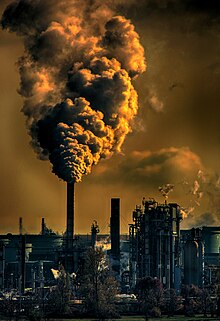


The commercial determinants of health are the private sector activities that influence individual and group differences in health status.[2] Commercial determinants of health can affect people's health positively (such as sport or medical industries) or negatively (such as arms and tobacco industries).[2][3] They are part of the broader social determinants of health.
Corporate and business activities influences the social, physical and cultural environments in which people live. For example:[2][4]
Commercial determinants of health impact a wide range of risk factors and noncommunicable diseases (especially cardiovascular diseases,[5] cancer,[6] chronic respiratory diseases and diabetes). For example:[2][7]
According to The Lancet, 'four industries (tobacco, unhealthy food, fossil fuel, and alcohol) are responsible for at least a third of global deaths per year'.[7]